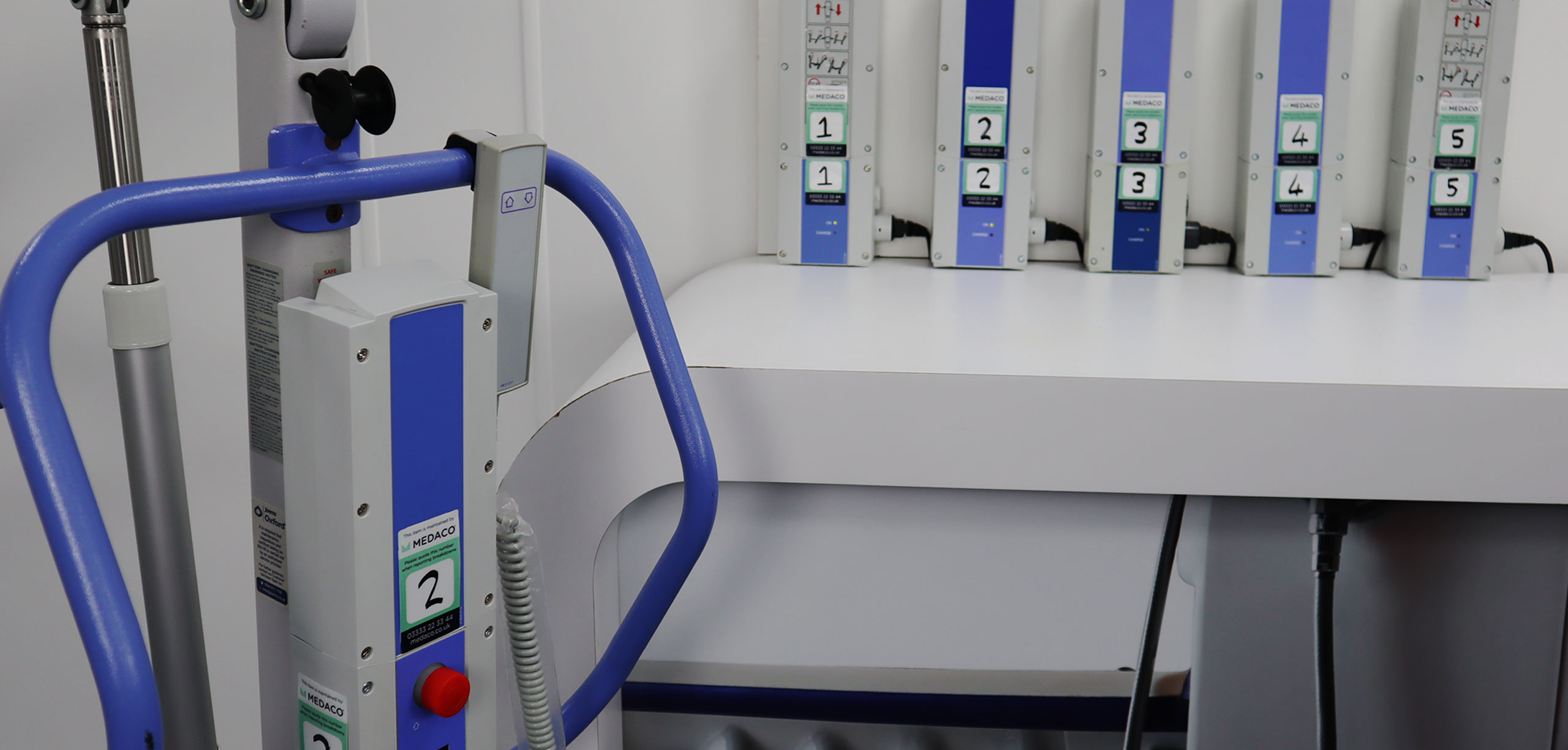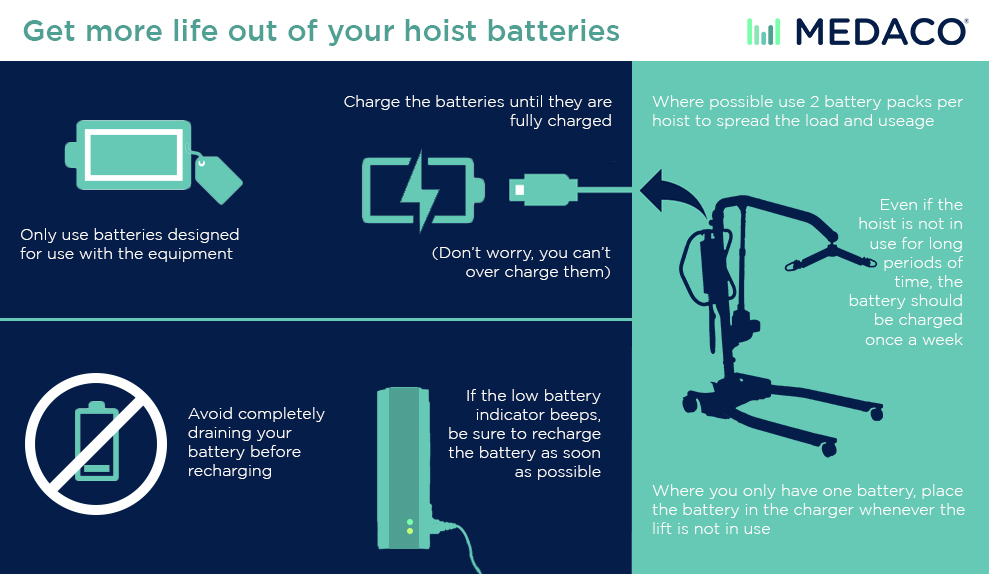
Hoist batteries are a critical part of any piece of equipment. Getting more life out of your hoist batteries can reduce downtime and unnecessary costs associated with batteries.
To ensure your patient lifting equipment is always ready for use, it is recommended that a fully charged battery pack is always on hand. However, in a busy care environment, and potentially with multiple hoists that use the same type of battery pack, how can you ensure a battery is always charged?
This video explains how your care home group can implement a simple, systematic approach to get more life out of your hoist batteries.
Steps to get more life out of your hoist batteries
Step 1 – Make sure each hoist has a corresponding charger and two battery packs.
Step 2 – Number the hoist, the charger, and two battery packs with the corresponding number (or letter).
Step 3 – Repeat this process for each hoist in use.
Where possible, it is recommended that all charging units are set up in a convenient, and easy to access area, near to where the hoist is used. This will help ensure the correct batteries are used on the corresponding hoists.
Order your Free Sticker Pack Today
By implementing this system, you can reduce the time your patient hoist is ‘out of service’ because of low batteries. As well as reduce the likelihood of replacing batteries that lose their ability to keep their charge.
Fill in the form below and we will send you a pack of stickers in the post.
Manufactures guidelines for hoist batteries
In most manuals for patient lifting equipment, the manufacturers state “The expected life for consumables, such as batteries, is dependent upon the care and usage of the equipment concerned”. Therefore, it is vital that batteries are maintained in accordance with the manufacturer’s published instructions for use and the ‘Preventative Maintenance Schedule’.
To extend the life of your hoist batteries, it is recommended that the battery pack is charged on a regular basis, even if it is not being used. This is because a hoist battery will deplete (lose power) slowly, even when not in use. Most hoists now have some indication (audible and/or visual) as to the amount of power left in the battery. Use this indication to determine when the battery needs charging. With some battery types, it is important not to let batteries drain too low, as this sometimes prevents them from charging to the full capability again.
Checking the battery is fully charged is part of checking the hoist is fully functioning, which is covered in more detail in Hoist safety checks before use.
Other tips for getting more life out of your hoist batteries
Battery life depends on many factors including:
- Frequency of use
- Frequency of charging
- Temperature of operation
- Storage and storage time
- Weight of person being hoisted
These tips should help you extend the life of your hoist battery:

Tip 1: Only use batteries designed for use with the equipment.
Tip 2: Charge the batteries until they are fully charged (Don’t worry, you can’t overcharge them).
Tip 3: Avoid completely draining your battery before recharging.
Tip 4: If the low battery indicator beeps, be sure to recharge the battery as soon as possible.
Tip 5: Where possible use 2 battery packs per hoist, as this spreads the load/usage over 2 battery packs, hence last longer. The other benefit of a second battery is that your hoist is never in a situation where you cannot use it if waiting for the one battery to charge.
Tip 6: Where you only have one battery, place the battery in the charger whenever the lift is not in use.
Tip 7: Even if the hoist is not in use for long periods of time, the battery should be charged once a week.
